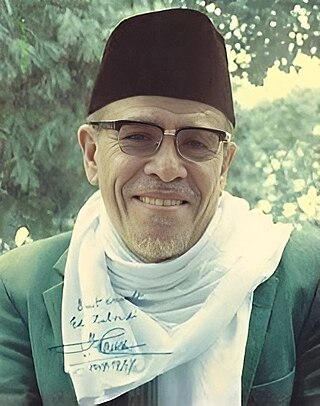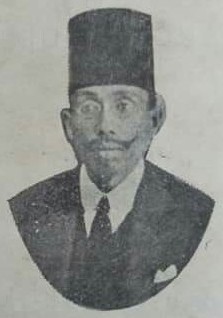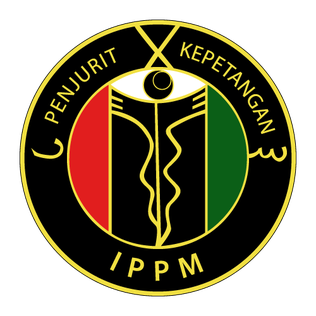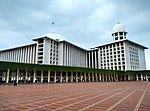
Minangkabau people, also known as Minang, are an Austronesian ethnic group native to the Minangkabau Highlands of West Sumatra, Indonesia. The Minangkabau's West Sumatera homelands was the seat of the Pagaruyung Kingdom, believed by early historians to have been the cradle of the Malay race, and the location of the Padri War.

West Sumatra is a province of Indonesia. It is on the west coast of the island of Sumatra and includes the Mentawai Islands off that coast. West Sumatra borders the Indian Ocean to the west, as well as the provinces of North Sumatra to the north, Riau to the northeast, Jambi to the southeast, and Bengkulu to the south. The province has an area of 42,119.54 km2 (16,262.45 sq mi), with a population of 5,534,472 at the 2020 census. The official estimate at mid 2022 was 5,640,629. The province is subdivided into twelve regencies and seven cities. It has relatively more cities than other provinces outside Java, although several of them are relatively low in population compared with cities elsewhere in Indonesia. Padang is the province's capital and largest city.

Pagaruyung, also known as Pagarruyung, Pagar Ruyung and Malayapura or Malayupura, was a kingdom that once stood in the island of Sumatra and the seat of the Minangkabau kings of Western Sumatra. Modern Pagaruyung is a village in Tanjung Emas subdistrict, Tanah Datar regency, located near the town of Batusangkar, Indonesia.

Muhammadiyah ; officially Muhammadiyah Society is a major Islamic non-governmental organization in Indonesia. The organization was founded in 1912 by Ahmad Dahlan in the city of Yogyakarta as a reformist socioreligious movement, advocating ijtihad - individual interpretation of Qur'an and Sunnah, as opposed to Taqlid - conformity to the traditional interpretations propounded by the ulama. Since its establishment, Muhammadiyah has adopted a reformist platform mixing religious and secular education, primarily as a way to promote the upward mobility of Muslims toward a 'modern' community and to purify Indonesian Islam of local syncretic practices. It continues to support local culture and promote religious tolerance in Indonesia, while a few of its higher education institutions are attended mostly by non-Muslims, especially in East Nusa Tenggara and Papua provinces. The group also runs a large chain of charity hospitals, and operated 128 universities as of the late 1990s.

Abdul Malik Karim Amrullah, better known by his pen name Hamka was an Indonesian ʿālim, philosopher, writer, lecturer, politician and journalist.

Mohammad Natsir was an Islamic scholar and politician. He was Indonesia's fifth prime minister.

The Overseas Minangkabau is a demographic group of Minangkabau people of Minangkabau Highlands origin in Central Sumatra, Indonesia who have settled in other parts of the world. Over half of the Minangkabau people can be considered overseas Minangkabaus. They make up the majority of the population of Negeri Sembilan and Pekanbaru. They also form a significant minority in the populations of Jakarta, Bandung, Medan, Batam, Surabaya and Palembang in Indonesia as well as Kuala Lumpur, Malacca, Penang, Singapore and Brunei Darussalam in the rest of the Malay world. Minangkabaus have also emigrated as skilled professionals and merchants to the Netherlands, United States, Saudi Arabia and Australia. The matrilineal culture and economic conditions in West Sumatra have made the Minangkabau people one of the most mobile ethnic group in Maritime Southeast Asia.

Abdul Karim Amrullah, known as Haji Rasul, was a Muslim reformer who led reformation of Islam in Sumatra, Dutch East Indies.
Muhammad Amrullah Tuanku Muhammad Abdullah Saleh also known as Tuanku Kisai, was a great scholar of Minangkabau and an ancestor of two major figures in the Malay world. One man is his own son, Abdul Karim Amrullah, and another is his grandson, Hamka. His grandfather was Tuanku Nan Tuo, one of the prime movers of the Padri in West Sumatra.

Tenggelamnja Kapal van der Wijck is an Indonesian serial and later novel by Haji Abdul Malik Karim Amrullah published in 1938. It follows the failed love between Zainuddin, a mixed-race man, and Hayati, a pure Minang woman.

Istiadat Pewaris Penjurit-Kepetangan Melayu or formerly known as Ilmu Persilatan Penjurit-Kepetangan Melayu, shortform IPPM is one of the oldest original known to date Malay martial art form or called 'Silat' in existence which has been heritage from one generation to another. Descended from the first ruler of the Malayapura Kingdom, King Adityawarman whom is also known as Seri Maharaja Diraja which to a later stage sparked the start of Minangkabau history in Pagaruyung Kingdom, Sumatra, Indonesia. These story has been greatly narrated in most of old Malay Literature including in of the most reliable sources to date called Sulalatus al-Salatin or better known as The Malay Annals (Malay: Sejarah Melayu). The manuscript begin with the stories of Wan Malini and Wan Empuk whom was presented with 3 adopted princes right after when their rice fields was magically expelling gold. These 3 princes was later mark as the kickstart for the next 3 big empires in Malay Archipelago. Those empires were the Kingdom of Majapahit, The Malacca Sultanate and the Pagaruyung Kingdom around the 12th century.

Mahmud Yunus was an Indonesian Minangkabau Islamic preacher and teacher. He authored over seventy-five books, including Tafsir Qur'an Karim and an Arab-Indonesian dictionary. His books are used in madarsas and pesantrens. During his employment in the Indonesian Department of Religion, he promoted the incorporation of religious lessons into the national education curriculum. Yunus received an Honorary Doctorate in "tarbiyah" from IAIN Syarif Hidayatullah, Jakarta. A road to IAIN Imam Bonjol, Padang is named after him.

Islam is the most common religion in the Indonesian province of West Sumatra, embraced by 97.42% of the population. The Muslim population increases to 99.6% if it excludes the Mentawai Islands, where the majority of the non-Muslim (Protestant) West Sumatrans reside. Islam in West Sumatra is predominantly Sunni, though there is a small Shia Islamic pocket within the coastal city of Pariaman. The Minangkabau people, indigenous to West Sumatra, comprise 88% of the West Sumatran population today and have historically played an important role within Indonesia's Muslim community. Up until today, the region is considered one of the strongholds of Islam in Indonesia.
Tuanku Rao (1790–1833) was an Islamic cleric (ulama), leader, and commander. He was known as a prominent padri, a group of Islamic reformists who advocated for the puritanical approach in Islam inspired by Muhammad ibn Abd al-Wahhab in the early 18th century West Sumatra. He also contributed to the proselytization of Islam among Batak people. He died during the Padri War in 1833.
Sumatera Thawalib was one of the earliest Islamic mass organizations in Indonesia, based in West Sumatra. Sumatera Thawalib represented the modernist school of Islam in Indonesia, an Islamic reform with heavy emphasis on the Qur'an, hadith, a modern scientific education, and abolishing of non-orthodoxy. Islamic Modernism was promoted by Muhammad Abduh. The term Sumatera Thawalib literally means "Students of Sumatra", and it was founded on January 15, 1919 as a result of meeting between the Muslim students of Padang Panjang, Parabek and Padang Japang. The aim of the organization was deepening of Islamic knowledge among the Muslim students. The organization had contributed substantially to the development of Islam in West Sumatra in the early 20th century.

Abdullah Ahmad was an Islamic cleric (ulama) and reformist hailed from Padang Panjang, West Sumatra. He is a founder of Islamic mass organization based in West Sumatra, Sumatera Thawalib. He also founded the Islamic magazine Al-Munir, the first Islamic mass media in the Indonesian archipelago. Together with Abdul Karim Amrullah, he became one of the first Indonesians who received the honorable degree from Al-Azhar University in Cairo.

Union of Islamic Education, also known as PERTI, is a Shafii-Ash'ari Islamic organization in Indonesia. The organization was founded by Sulaiman ar-Rasuli on May 5, 1928 in Candung, West Sumatra. In its development, PERTI had become a political party and gained four People's Representative Council (DPR-RI) seats and seven Constituent seats in 1955 general election.

Minangkabau culture is the culture of the Minangkabau ethnic group in Indonesia, part of the Indonesian culture. This culture is one of the two major cultures in the Indonesian archipelago which is very prominent and influential.

Rahmah el Yunusiyah was a Dutch East Indies and Indonesian politician, educator, and activist for women's education. Born into a prominent family of Islamic scholars, she was made to leave school in order to get married as a teenager. After a few years of marriage, el Yunusiyah obtained a divorce and returned to her education.

Sheikh Sulaiman ar-Rasuli, known as Inyiak Canduang, was an Indonesian ʿālim and founder of Union of Islamic Education, a kaum tua (traditionalist) Islamic organization from West Sumatra. He was credited for popularizing the famous Minangkabau idiom, adat basandi syarak, syarak basandi Kitabullah.


















